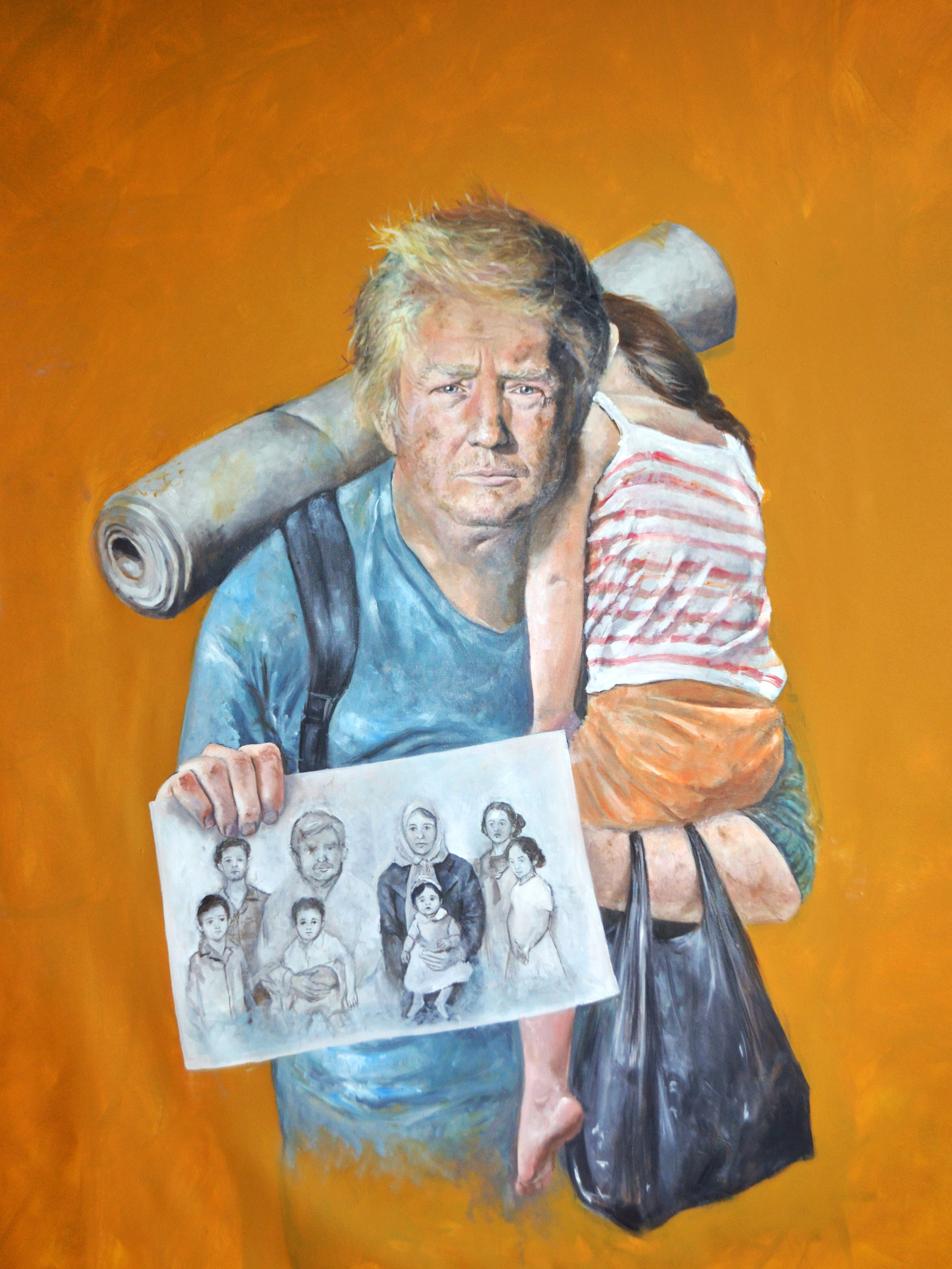The Vulnerability Series: Abdalla Al Omari
Previously published in The National.
Abdalla Al Omari. The Queue, 2016. Courtesy Ayyam Gallery
It is the kind of role-reversal designed to hammer home an uncomfortable reality. Donald Trump, Bashar Al Assad, Vladimir Putin and Barack Obama are portrayed as refugees, standing in bread lines, clad in torn clothes, with dirt-smudged faces and sad eyes, appealing to the viewer for sympathy.
The artwork, by Brussels-based Syrian painter Abdalla Omari, is part of the latest exhibition in one of Ayyam Gallery’s two spaces in Alserkal Avenue.
Titled The Vulnerability Series, the artist’s aim is "to take away [the world leaders’] power, not to serve me and my pain but to give [them] back their humanity, and the audience an insight into what the power of vulnerability can achieve".
Abdalla Al Omari. The Mediterranean, 2015. Courtesy of Ayyam Gallery
The statement is vague. Omari suggests that in depicting these figures of authority as "vulnerable" refugees, he is showing them as real people with human emotions and, therefore, we should feel empathy for them. But surely it is not the world leaders we should be empathising with, is it?
At the same time, Omari says he is shifting the power balance away from the leaders towards the displaced people they represent. It is true that the reasons behind this conflict lie in complex power struggles, but trying to subvert this and place politicians as refugees is to oversimplify the horrendous reality that millions of people all over the world are enduring. And to suggest that any of them have any power, in vulnerability or otherwise, is misguided.
To give the artist the benefit of the doubt, perhaps he is attempting to explore the power of vulnerability in an image. We know that certain photographs have had great effect during this painfully protracted Syrian conflict and the ensuing refugee crisis.
Aylan Kurdi, the 3-year-old boy whose body washed up on a beach after he drowned, is probably the most memorable – but while this and other heart-wrenching images have stayed in our collective memory, they have done little to change what is going on.
How then can an artwork make this all-important change? I would argue that to have any kind of effect, a piece of art must not state the obvious. Art made today must be correspond to the society in which we live and must pay reference to the fact that we are all flooded with information from many sources all of the time. The role of the artist is to be nuanced and subtle.
Abdalla Al Omari. Donald, 2016. Courtesy of Ayyam Gallery
Clearly trying to cause public debate, Omari will no doubt be successful in that, because this is not the kind of show that a viewer can pass over without comment but unfortunately, the artwork does not shed light on what it is like for these people, forced to leave their homeland with whatever they can carry and fall victim to traffickers, crooks and a whole corrupt system.
Neither does it do anything to alleviate the problem. Just a few months ago (in December 2016), the same gallery space was filled with an exhibition of work by Palestinian artist Khaled Jarrar, which in many ways tackled the same issues but in a much more effective way. He constructed a wall to dissect the gallery space and placed a free-standing ladder far enough away from the wall for it to be useless. This was a direct criticism of Trump (then President Elect) and his policies most notably, his anti-immigration stance and his proposal to build a wall between the United States and Mexico. Another of Ayyam’s artists, Tammam Azzam found worldwide acclaim when he spoke out against the Syrian crisis by superimposing paintings from Western world onto bombed-out buildings.
Where Azzam and Jarrar use allegory and symbolism to make their point, Omari uses literal and therefore cruder representation, which is sadly a disservice to himself. Allowing the audience more credit to draw their own interpretations and to connect the dots rather than spelling it out for them also gives a piece of art longevity. In the long term, ambiguity fuels relevance no matter the era the artwork is viewed.
If it is too obvious it doesn’t leave room for metaphor and worse, it won’t carry any meaning at all.
The Power of Vulnerability ran from May 22 until July 1, 2017 at Ayyam Gallery in Dubai. For more information visit: www.ayyamgallery.com


